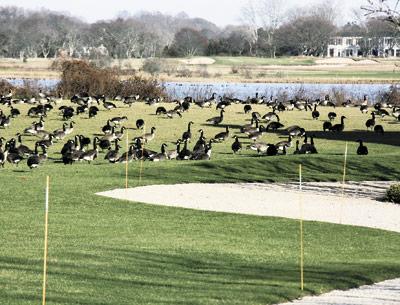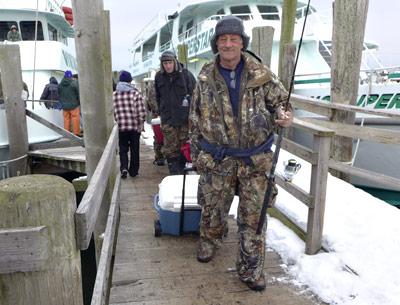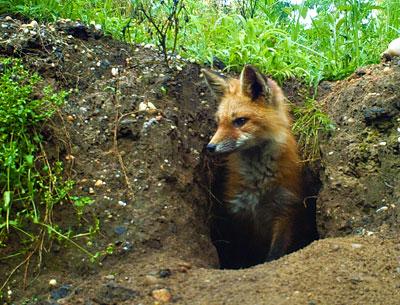Nature Notes: Duck, Duck, Duck, Goose
Nature Notes: Duck, Duck, Duck, Goose

Last Saturday, as a part-time participant in the New York State Waterfowl Count for the first time in years, I accompanied the Rubinstein sisters, Vicki Bustamante, and 12-year-old Hannah Mirando from Montauk. Readers may remember that Hannah also was a key observer in the 100-plus-year-old Montauk Christmas Bird Count held on Dec. 14 of last year.
It was a pleasant day with an on-again, off-again stiff west wind. Our party’s territory consisted of Hook, Georgica, Town, Wickapogue, Fairfield, Kellis, Sagg, and Poxabogue Ponds and Bridgehampton’s north-south chain of ponds ending with Short’s Pond by the Atlantic Golf Club just north of Scuttlehole Road.
It was also a big day for waterfowl hunting. Some of us were fooled by sets of geese and black duck decoys that we studied via our scopes and binoculars for longish times before we realized they were not the real thing — they didn’t move! About 2 in the afternoon, I was the lone observer at Kellis Pond just west of the Bridgehampton Commons when a flock of about 100 Canada geese flew in from the west, circled around and approached goose decoys on the west edge of the pond. Three of them made a pass at the decoys and were about to set in when three blasts from a blind on the edge of a shore resounded, one goose fell, the others all took off to the east. I stayed to watch a Labrador retriever emerge from the blind, swim out about 100 feet, and retrieve the downed goose.
As per usual on such counts, Canada geese stole the show. Our party counted at least 9,000 of them, the biggest collection feeding in the grass farm field along the east side of Beach Lane in Wainscott where they numbered 3,504.
Hook Pond had 1,750 and Shorts Pond another 1,200 or so. The latter venue was the last examined and geese kept settling in all the time, raising a loud cacophony from both the water and the sky above.
There were 12 pure white snow geese grouped together among the horde of Canadas on the pond; they were quiet, apparently napping. When it’s not frozen, Shorts Pond and the two little ponds on the opposite side of the road are always productive in the winter and Saturday was no exception. There were also at least 10 green-winged teals, three American coots (not ducks), two American wigeons, three black ducks, 31 mallards, and 1 black duck-mallard hybrid.
In the 1940s and 1950s, counts such as ours yielded many more black ducks than mallards. On this day mallards outgunned blacks, 253 to 159. Like Canada geese, lots of mallards breed locally and stay around during the winter, while only a few black ducks breed this far south. The Nature Trail on David’s Lane in East Hampton yielded the most mallards, 165, along with 4 mallard-black hybrids, while the largest collection of black ducks — 86 — were at Fairfield Pond in Sagaponack by the ocean off Daniel’s Lane. (I wonder if they get a kick out of hanging in the shadow of Sagaponack’s and the South Fork’s largest mansion.)
Canada geese outnumbered all of the other waterfowl — some 26 different species — taken together by almost 12 to 1. They are by far our most common waterfowl on the South Fork, apart from the sea ducks such as the scoters, more than 40,000 of which were tallied on the Montauk Count. On Saturday, however, they were lacking. Our group counted only 156 scoters belonging to all three species.
As for the mergansers, the species with the highest number was the hooded merganser. We counted 60. Red-breasted mergansers, or sheldrakes, which are generally the most frequent of the lot, came to only 54, while common mergansers accounted for 8, all of which were in their usual hangout, East Hampton’s Hook Pond. There were 82 ruddy ducks, 65 of which were in one of their favorite spots, Wainscott Pond; another 17 were found in Sagg Pond. Buffleheads, which do well in all kinds of water bodies tallied 37, with the most — 24 — counted in Sagg Pond. No brant, scaup, redheads, wood ducks, long-tailed ducks (or oldsquaw), or common goldeneye were observed, no doubt because our territory didn’t include any of the Peconic Estuary’s waters.
Other duck species becoming more and more uncommon with each passing year are the canvasback, blue-winged teal, shoveler, and pintail. Only four, two, two, and one of each were seen, respectively. Perhaps the day’s rarest finds were the five white-fronted geese seen at Pots and Kettles and the two tundra swans (a k a whistling swans) on Hook Pond.
Speaking of swans, 69 mute swans were counted in five ponds, the most — 45 — in Sagg Pond. What is this cockamamie idea that the New York State Department of Environmental Conservation has in mind with respect to the mute swan population? Some authorities want to eliminate them from the wild in New York State by 2025. I’ve been keeping a close eye on this swan’s South Fork population for close to 40 consecutive years now. If anything, there were at least three times as many of them around in the 1970s than there are today. They don’t migrate and except when inland water bodies are frozen solid, they are easy to find and easy to observe. They are one of the country’s largest birds.
Who really cares that they are exotic? They’ve been here since the Civil War, and that’s a very long time. They don’t multiply like Canada geese, which, incidentally, are quite native. They are what ecologists call “naturalized.” Let them be, I say! They are an entrenched part of the freshwater ecosystem.
--
Larry Penny can be reached at [email protected].


